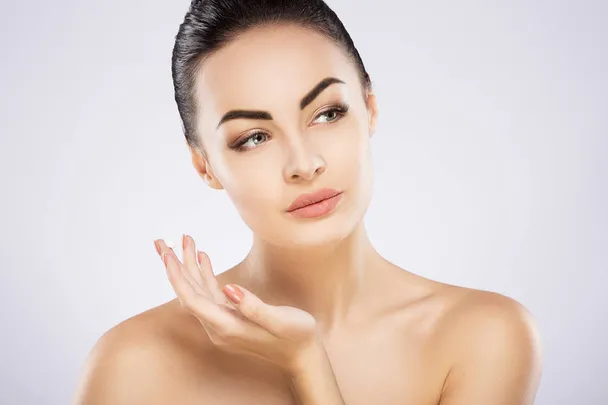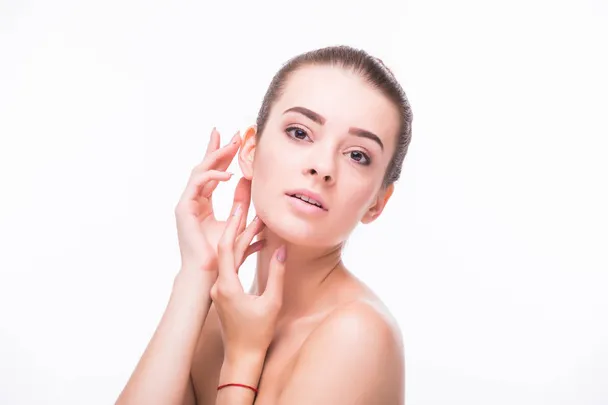Achieving the Softest Hair of Your Life: Essential Tips for Hair Health
Soft, luxurious hair is a coveted asset for many, but achieving and maintaining it requires a combination of proper care, nourishment, and lifestyle habits. With the right techniques and products, you can transform your hair into its softest, healthiest state yet. In this comprehensive guide, we’ll explore essential tips to help you attain the softest hair of your life.
Gentle Cleansing:
Proper cleansing is the foundation of a healthy hair care routine. It sets the stage for optimal scalp health and promotes the softness and vitality of your hair. Here’s why gentle cleansing is essential and how you can incorporate it into your hair care regimen.
First and foremost, it’s crucial to start with a gentle shampoo. Look for a formula specifically designed to cleanse your scalp and hair without stripping away their natural oils. Harsh shampoos containing sulfates can be particularly damaging as they tend to over-cleanse, leaving your hair feeling dry, brittle, and prone to breakage. Opt instead for sulfate-free formulas that effectively remove dirt and impurities while maintaining the natural moisture balance of your hair and scalp.
By avoiding sulfates and opting for gentle shampoos, you can prevent dryness and damage, ensuring that your hair retains its softness and shine. Additionally, limiting the frequency of shampooing is key to preventing over-drying. Washing your hair 2-3 times a week strikes a balance between cleanliness and maintaining the natural oils that keep your hair healthy and hydrated.
Over-shampooing can strip away these essential oils, leading to dryness, irritation, and even scalp issues such as dandruff. By spacing out your shampoo sessions, you give your scalp and hair the opportunity to replenish and retain moisture, resulting in softer, more manageable hair.
Deep Conditioning:
Deep conditioning is a vital step in maintaining soft, healthy hair. It involves using specialized treatments to provide intense moisture and nourishment, addressing various hair concerns such as dryness, frizz, or damage. Here’s why deep conditioning is essential and how you can incorporate it into your hair care routine for optimal results.
Firstly, incorporating deep conditioning treatments into your routine is crucial for replenishing moisture and restoring vitality to your hair. Environmental factors, heat styling, chemical treatments, and everyday wear and tear can strip away the hair’s natural moisture, leaving it dry, brittle, and prone to breakage. Deep conditioners are formulated with potent ingredients that penetrate the hair shaft, delivering hydration and nutrients deep within the strands.
When choosing a deep conditioner, it’s essential to consider your hair type and specific concerns. Whether you have dry, damaged, or frizzy hair, selecting a conditioner tailored to your needs can address these issues effectively. Look for products enriched with ingredients like shea butter, argan oil, coconut oil, or keratin, known for their moisturizing and repairing properties.
Once you’ve selected the right deep conditioner, proper application is key to maximizing its benefits. After shampooing, apply the conditioner generously to damp hair, focusing on the mid-lengths and ends where the hair is most prone to dryness and damage. Using a wide-tooth comb, gently distribute the conditioner evenly throughout your hair, ensuring thorough coverage and penetration.
Allow the deep conditioner to sit for the recommended amount of time, typically 5-10 minutes or longer for intensive treatments. During this time, the rich formula works its magic, hydrating and nourishing your hair from within. For an added boost of moisture, consider using a shower cap or wrapping your hair in a warm towel to create a steamy environment that helps the conditioner penetrate more deeply.
After rinsing out the conditioner, you’ll notice immediate improvements in the softness, manageability, and overall health of your hair. Incorporating deep conditioning into your routine on a weekly or bi-weekly basis can help maintain optimal moisture levels, prevent damage, and promote long-term hair health.
Regular Trimming:
Regular trimming is a fundamental aspect of maintaining soft, healthy hair. By scheduling trims every 6-8 weeks, you can effectively remove split ends and prevent breakage, promoting overall hair health and enhancing softness and manageability. Here’s why regular trimming is essential and how it contributes to the vitality of your hair.
Firstly, trimming every 6-8 weeks is necessary to address split ends, which occur when the hair shaft becomes damaged and splits into two or more strands. Split ends not only detract from the appearance of your hair but can also lead to further damage and breakage if left unattended. By regularly removing split ends through trimming, you prevent them from traveling up the hair shaft, preserving the integrity of your hair and reducing the risk of breakage.
In addition to removing split ends, regular trims help maintain the overall health and appearance of your hair. Over time, the ends of your hair can become dry, brittle, and prone to breakage, especially if subjected to heat styling, chemical treatments, or environmental stressors. By trimming away damaged ends, you promote the growth of healthier, stronger hair from the roots, resulting in a smoother, more uniform texture and improved softness.
Furthermore, trimming contributes to the manageability of your hair by preventing tangles, knots, and snags. Split ends and damaged hair are more likely to become tangled and difficult to style, leading to frustration and potential damage during detangling. By keeping your ends neat and tidy through regular trims, you make it easier to comb, brush, and style your hair, reducing the risk of breakage and promoting overall hair health.
Heat Protection:
Protecting your hair from heat damage is crucial for maintaining soft, healthy strands, especially if you frequently use hot styling tools like flat irons, curling wands, or blow dryers. Incorporating heat protection into your hair care routine is essential to shield your hair from the damaging effects of high temperatures. Here’s why heat protection is important and how you can implement it effectively:
Firstly, applying a heat protectant spray or serum before using hot styling tools creates a barrier between your hair and the heat, minimizing damage and preventing moisture loss. Heat protectants contain ingredients that coat the hair shaft, forming a protective layer that helps to distribute heat evenly and reduce the risk of damage. Look for products specifically formulated for heat protection, and apply them generously to damp or dry hair before heat styling.
Opting for lower heat settings on styling tools whenever possible is another important strategy for minimizing damage and maintaining hair softness. High temperatures can cause the hair cuticle to lift, leading to moisture loss, frizz, and damage. By using lower heat settings, you reduce the intensity of the heat applied to your hair, minimizing the risk of heat damage while still achieving your desired style.
In addition to using heat protectants and lower heat settings, it’s essential to practice safe heat styling techniques to further protect your hair. Avoid holding hot styling tools in one place for too long, as this can cause localized heat damage and breakage. Instead, move the tool continuously through your hair, using smooth, gentle motions to distribute heat evenly.
Furthermore, consider giving your hair a break from heat styling whenever possible. Embrace air-drying or heatless styling methods to allow your hair to recover and maintain its natural moisture balance. When you do use heat styling tools, be mindful of how frequently you use them and give your hair regular breaks to prevent overexposure to heat.
Minimize Heat Styling:
Minimizing heat styling is a key strategy for maintaining soft, healthy hair. Heat styling tools such as flat irons, curling wands, and blow dryers can cause over-drying and damage to your hair if used excessively. By reducing reliance on these tools and embracing air-drying whenever possible, you can preserve your hair’s natural moisture balance and promote softness. Here’s why minimizing heat styling is important and how you can incorporate it into your hair care routine:
Firstly, limiting the use of heat styling tools helps prevent over-drying and damage to your hair. High temperatures from styling tools can strip away the hair’s natural oils, leading to dryness, brittleness, and breakage over time. By reducing the frequency of heat styling, you give your hair a chance to recover and maintain its moisture balance, resulting in softer, healthier strands.
Embracing air-drying whenever possible is another effective way to minimize heat damage and preserve hair softness. Allowing your hair to dry naturally eliminates the need for heat from blow dryers, reducing the risk of over-drying and damage. After washing your hair, gently squeeze out excess water with a towel and allow your hair to air dry, either by leaving it down or styling it into loose braids or buns for natural waves or curls.
In addition to air-drying, there are several heatless styling methods you can try to achieve your desired look without using heat styling tools. For example, you can create soft waves or curls by braiding damp hair before bedtime and letting it dry overnight. You can also use foam or fabric rollers to achieve volume and texture without heat. These heatless styling techniques not only minimize damage but also promote healthier, more resilient hair over time.
When you do need to use heat styling tools, be sure to apply a heat protectant spray or serum to minimize damage and protect your hair from the heat. Additionally, opt for lower heat settings whenever possible and avoid holding the tool in one place for too long to prevent overexposure to heat.
Achieving the softest hair of your life requires a combination of proper care, nourishment, and lifestyle habits. By following these essential tips and incorporating them into your hair care routine, you can transform your hair into its healthiest, most luxurious state yet. Remember to be gentle with your hair, avoid harsh treatments, and prioritize hydration and nourishment for optimal results. With dedication and patience, you can enjoy soft, beautiful hair that looks and feels amazing every day.










